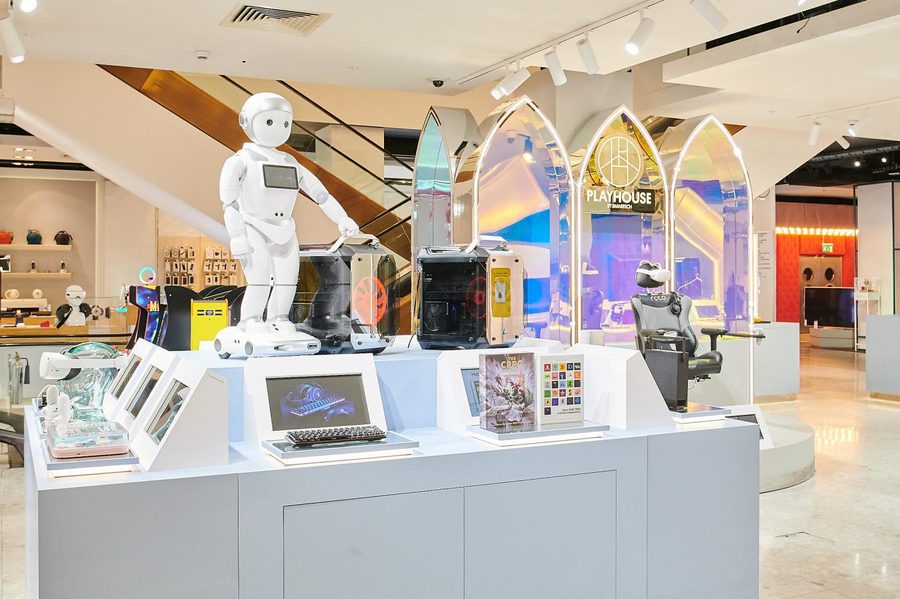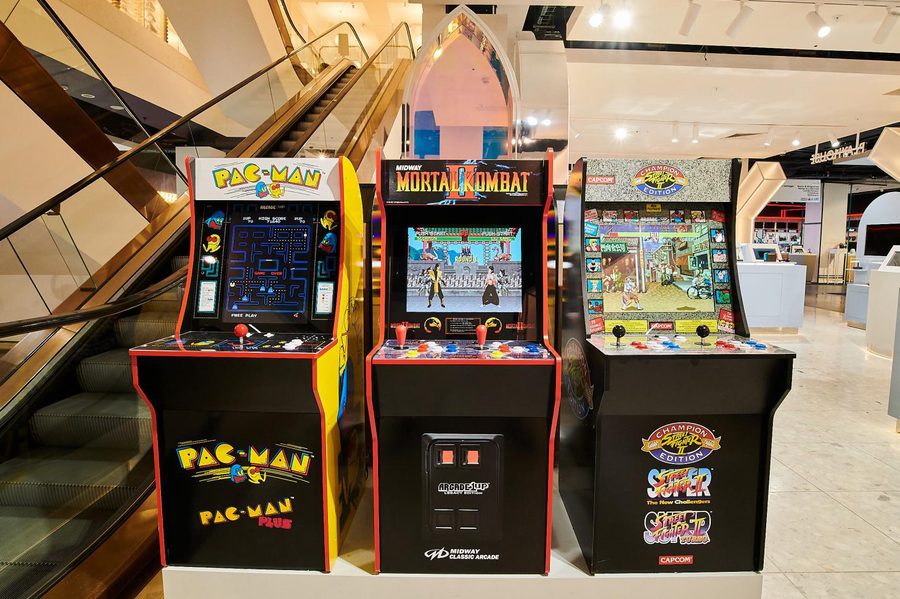Learning from PlayHouse @ Selfridges
Senior Creative Strategist, Isobel Grad, visits the PlayHouse in Selfridges on a research safari and was interesting by its juxtaposition to traditional gaming and tech experiences.


Senior Creative Strategist, Isobel Grad, visits the PlayHouse in Selfridges on a research safari and was interesting by its juxtaposition to traditional gaming and tech experiences.


Out in central London recently researching to have a better understanding of the consumer tech space and where it might be headed, and finally made my way downstairs to the gaming concept, PlayHouse, in Selfridges. It immediately struck me as uniquely uplifting and welcoming, in a space often dominated by dark, futuristic and classically ‘techy’ codes. It’s a really interesting concept, and possibly points to some important changes in the role of gaming in culture, and how gaming is represented.

PlayHouse seems to completely break away from the typical mainstream codes of tech and aligns the space with a more ethereal, almost spiritual escape-through-gaming. Whilst many other gaming spaces (and gaming-focused brands) use similar visual cues such as dark lighting, black surfaces and spaces, and targeted streaks of cool neon lights (think the motorcycle scene in Tron). These cues demonstrate futuristic technological prowess, but beyond that they are also commonly used in ‘masculine’ products (for example in most mainstream personal care products marketed towards men), ultimately reinforcing the idea that gaming a particularly male-dominated and requires a special understanding of technology to participate.

The Selfridges space however features illuminated light surfaces - in cream and light pink - and shapes drawing more on medieval-inspired fantasy (in mirrored and gently lit gothic arch forms) than dark sci-fi imaginings. While small, the space is light, almost elevating, and in the use of pastel blues and pinks, soft off-white, and diffused lighting interestingly shares much in common with beauty and wellness codes seen in skincare and health (The Ordinary quickly comes to mind, the colorways of Glossier, or even many CBD drinks brands). By drawing on a broader set of cues, and particularly some associated with mental uplift and self-care as well as fantasy exploration, the space opens up gaming to a wider range of potential consumers and suggests a new way of thinking about how the category can be integrated into daily life. Perhaps this reflects a cultural shift in tech and gaming culture.
Looking to the future, we may see gaming and technology allowing for a broader perspective on who participates in it, and what kinds of experiences it can provide. Rather than a futuristic vision, it can provide a source of escapism and uplift that is increasingly open, accessible, and everyday.


The first ever SXSW London took over Shoreditch this month, offering a wealth of inspiration and insights across tech, business and culture. We share our thinking into how it can return even bigger and better for 2026.

